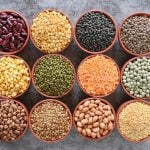
Tag Archives Forages
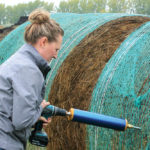
Testing forage even more necessary in a dry year
With many parts of the country having endured a dry season, knowing feed nutrient levels is crucial
A startling amount of beef producers run the risk of nutrient deficiencies in their herd by not testing their forage sources. Analyzing forage sources to better plan for feeding and supplementation is even more crucial in a dry year to ensure cattle receive the nutrients they require as the colder months and calving season approach. […] Read more
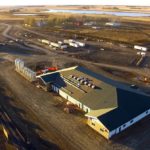
New name and facilities for Western Beef Development Centre
A new facility at the University of Saskatchewan includes both cow-calf and forage research
There are changes afoot at the Western Beef Development Centre (WBDC) including a new name, additional locations and increased research, teaching and outreach capacity. On April 1, 2018, the Western Beef Development Centre, a division of the Prairie Agricultural Machinery Institute (PAMI), rolled into the University of Saskatchewan’s Livestock and Forage Centre of Excellence (LFCE).WBDC […] Read more

Do you need to extend your forage supply?
Nutrition with John McKinnon
In my August column, I wrote on the topic of creep feeding, a practice that many producers utilize to improve body condition and weaning weights, particularly during drought situations. Unfortunately, as summer has unfolded, significant areas of the country have experienced abnormally dry conditions, and as a result, many producers are scrambling for winter feed […] Read more

Pasture, hay resources for Manitoba livestock producers
Pastures and forage crops on the Prairies are in poor shape from lack of rain
Manitoba Agriculture is reminding agricultural producers affected by dry conditions of the programs and services available to livestock producers to manage forage shortages. To date, low levels of precipitation and soil moisture have affected the growth of pastures and forage crops in parts of Manitoba. Manitoba Agriculture provides a number of tools and resources for […] Read more
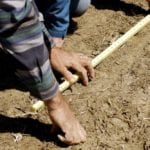
Making the case for forage legumes
Alberta producers offer the wisdom of their experience from seeding high-legume pastures
If you’re fearful that seeding pasture with legumes will be a waste of time and money, several Alberta producers have some tips for you. A new video from Alberta Agriculture and Forestry features producers offering their advice — some of it hard earned — on topics such as seedbed preparation, nutrients, and weed control. Having […] Read more
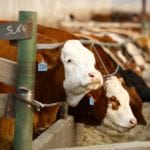
What goes around, comes around with protein: Part 2
Nutrition with John McKinnon
In my April column I focused on the principles of protein nutrition in beef cattle with an emphasis on rumen degradable and undegradable protein and on meeting the metabolizable protein needs of the animal. The reason that I focused on this topic was my experiences this past winter with producers who were having difficulty meeting […] Read more
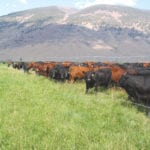
What’s best, grazing or haying, or both?
Depending on what you want from the land, and the level of production, you do have options
Grazing a piece of ground rather than haying it can have some advantages. Even irrigated pasture can be more productive than the same ground used for haying, especially with rotational grazing and good management. Irrigated pasture has high production potential and ability to regrow rapidly, especially if water is put back on it right after […] Read more

When it’s time to say goodbye to your herd
As an agricultural lender, Steve Ganczar has seen many of his clients grapple with the decision to downsize or disperse their cow herd. Ganczar, a senior lender and supervisor at a credit union in Dauphin, Man., always empathized with the heartbreak that this decision can create, whether it was due to financial or health reasons. […] Read more
To tackle a plant pathogen, get the ID right first
Forages: News Roundup from the May 2018 issue of Canadian Cattlemen
With more advanced equipment and technology, experts like Dr. Sarah Hambleton from Agriculture and Agri-Food Canada (AAFC) continue to refine our understanding of different plants and fungi. A recent case in point occurred when Hambleton, whose specialty is identifying fungi, and in particular rust, was sent a sample of contaminated switchgrass from Ontario to identify […] Read more

Dan Undersander’s thoughts on forages
Extension agronomist offers his tips on growing high-quality forages
Dan Undersander, a forage extension agronomist from the University of Wisconsin, is one of North America’s best known promoters of high-quality forages. I have known and worked with Undersander for many years and sometimes we would be on the same program. As he will be retiring this summer, I wanted to record some of his […] Read more

